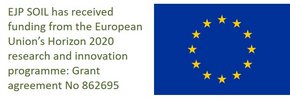Work Package 5: Mitigation measures and decision support framework for stakeholders.
Objectives
- Identification of catchments in need for implementing mitigation measures against on-site and off-site impacts of water erosion. This includes soil loss, sedimentation, nutrient and SOC depletion on agricultural fields, as well as reduction of surface water quality and risk of flood damage due to high sediment load.
- Cataloguing available mitigation measures against water erosion and developing a methodology for the assessment and selection of suitable mitigation measures tailored to the conditions of a given catchment by specifically addressing hydrological connectivity.
- Development of standardised guidelines for practitioners and decision makers for implementing mitigation measures based on disruption of hydrological connectivity across the landscape. Complemented with an appraisal of their beneficial impact and implementation cost, these can be used as decision support tools.
- Exploring the potential of translating these guidelines into legal standards/regulatory measures, e.g. through national implementations of cross-compliance (GAEC standards), Rural Development Programme actions, and technical standards (e.g. DIN-standard in Germany).
Description of work
Based on the knowledge generated in WP3 and WP4, several agricultural catchments with unsustainable water erosion rates, as defined by Panagos et al. (2020) or regional impact assessment, will be identified across the countries participating in this WP, to cover a diverse range of social and environmental conditions. These catchments will be evaluated considering the perspective of the stakeholders responsible for implementing mitigation measures for: i) identifying suitable mitigation measures to implement (in term of technologies used and location across the landscape) to optimize reduction of on-site as well as off-site impacts of sediment and SOC fluxes through the landscape; ii) evaluate the social and economic barriers for their implementation. These strategies will emphasize both field-scale measures to reduce on-site damages and actions at the catchment scale to minimise hydrological and sediment connectivity and thus off-site damages. The latter include sediment, nutrient and SOC inputs to watercourses as well as muddy floods threatening infrastructure and nature conservation areas. The selection of the most appropriate mitigation strategies, among those identified by WP1 and appraised by WP3 and 4, will be based on participatory evaluation methods that consider technical and economic aspects as well as social acceptance tailored to different local conditions (e.g., climate, soils, crops, farm size and productivity). With this, a standardised framework for regionally adapted guidelines is developed that support model users, practitioners and decision makers across member states. Furthermore, WP5 will highlight pitfalls and backlogs of existing EU and national policies and present potential solutions to translate our proposed guidelines into regulatory and technical standards.


